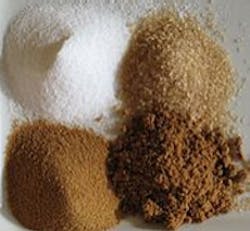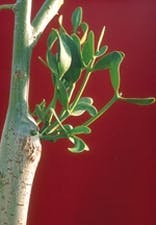Medical and health myths common during winter holidays
By Maria Perno Goldie, RDH, MS
Drs. Rachel C. Vreeman and Aaron E. Carroll highlight common medical or health beliefs in their books.(1.2) Other publications debate these issues as well. Some are related to the holidays and winter season, and will be highlighted here.(3)
Drs. Rachel C. Vreeman and Aaron E. Carroll highlight common medical or health beliefs in their books.(1.2) Other publications debate these issues as well. Some are related to the holidays and winter season, and will be highlighted here.(3)
Sugar in holiday cakes, cookies and candies has been blamed for hyperactive behavior of children. Sugar, however, is not to blame for bad behavior. At least twelve double blind randomized controlled trials have examined how children react to diets containing different levels of sugar.(4) None of these studies, not even studies looking specifically at children with attention-deficit/hyperactivity disorder (ADHD), could detect any differences in behavior between the children who had sugar and those who did not.(5) This includes sugar from a variety of sources, including sweets, chocolate, and natural sources. Even in studies of those who were considered “sensitive” to sugar, children did not behave differently after eating sugar full or sugar-free diets. ADHD is a neurobiological condition. It is a chronic condition that affects millions of children and often persists into adulthood. Problems associated with ADHD include inattention and hyperactive, impulsive behavior. Children with ADHD may struggle with low self-esteem, troubled relationships and poor performance in school.(6) Researchers have also studied how parents react to the connection between sugar and behavior. When parents thought their children have been given a drink containing sugar, even if it was really sugar-free, they rate their children’s behavior as more hyperactive.(7) The differences in the children’s behavior were not really evident, but were real in the parents’ minds. We do know that sugar in excess is contraindicated for a number of reasons, behavior is not one of them.
Another myth we fret about is the toxicity of poinsettias. With flowers and leaves of red, green, and white, poinsettias are widely used in holiday decorations. Even though public health officials have reported that poinsettias are safe, many continue to believe this is a poisonous plant.(8) The plant's association with Christmas began in 16th century Mexico, where legend tells of a young girl who was too poor to provide a gift for the celebration of Jesus' birthday. The tale goes that the child was inspired by an angel to gather weeds from the roadside and place them in front of the church altar. Crimson "blossoms" sprouted from the weeds and became beautiful poinsettias.(9) From the 17th century, Franciscan friars in Mexico included the plants in their Christmas celebrations. The star-shaped leaf pattern is said to symbolize the Star of Bethlehem, and the red color represents the blood sacrifice through the crucifixion of Jesus.(10)
We must however, be careful about mistletoe. Although mistletoe has been used in the treatment of several ailments, the berries are poisonous. Mistletoe is a plant that is used in Europe to treat certain types of cancer. Some studies have shown benefit from mistletoe, but all of the studies had at least one major weakness that raises doubts about its effectiveness.(11) The NCCAM cosponsored a clinical trial of mistletoe, given in combination with the drug gemcitabine, for cancer. The study looked at toxicity, safety, and immune system effects of mistletoe extract when combined with this chemotherapy drug. Raw, unprocessed mistletoe is poisonous. Eating raw, unprocessed European mistletoe or American mistletoe can cause vomiting, seizures, a slowing of the heart rate, and even death.
American mistletoe is unsafe for medicinal use. Individuals using mistletoe during the holiday season should keep the sprigs out of the reach of children and animals. For safety reasons, many companies have replaced the berries with artificial, plastic berries. So, it is safe to grab a kiss under the mistletoe, but leave the plant alone!Another daunting thought is that the rate of suicides increases over the holidays. The combined stresses of family dysfunction, increased feelings of loneliness, and more depression over the cold, dark winter months, make some think that there is also an increase in the number of suicides at this time. While the holidays might be a difficult time for some, there is no good scientific evidence to suggest a holiday peak in suicides. In December of 2000, the Annenberg Public Policy Center released the findings of their analysis of coverage of suicides during the 1999 winter holidays to 100 newspapers across the country.(12) The press release highlighted the fact that the majority of the 64 stories linking suicide with the holidays from November 8, 1999, to January 15, 2000, either implied or directly attributed the cause to the holiday season. The release also pointed out that suicides peak in the spring and not in the winter. The Policy Center hoped by informing reporters that the winter holiday-suicide connection was a myth, coverage of winter suicides would not explicitly make that link in the future; however, that was not the case and the myths persisted in the media. In 2007, the same publication stated that newspapers were close to putting to rest the myth that the holidays increase the risk of suicide. A new study (then) showed a dramatic drop in articles that, despite having no basis in fact, attribute the arrival of the holiday season with an uptick in suicides.(13) And last, but not least, as we approach the holidays and New Year’s Eve, we want to discuss preventing or treating alcohol hangover. Believe it or not, there was a study that sought to assess the clinical evidence on the effectiveness of any medical intervention for preventing or treating alcohol hangover.(14) Eight randomized controlled trials assessing eight different interventions were reviewed. The agents tested were propranolol, tropisetron, tolfenamic acid, fructose or glucose, and the dietary supplements Borago officinalis (borage), Cynara scolymus (artichoke), Opuntia ficus-indica (prickly pear), and a yeast based preparation. All studies were double blind. Significant intergroup differences for overall symptom scores and individual symptoms were reported only for tolfenamic acid, γ linolenic acid from B officinalis, and a yeast-based preparation. The conclusion was that there is no compelling evidence exists to suggest that any conventional or complementary intervention is effective for preventing or treating alcohol hangover. The most effective way to avoid the symptoms of alcohol-induced hangover is to practice abstinence or moderation.So, as the year ends and we prepare for 2012, remember to be aware of when evidence supports our decisions and advice, and when we function based on unexamined beliefs. While this was a light-hearted approach to myths and half-truths, we can expand this concept to patient treatment and recommendations. Employing methods of examination, research, discussion, and debate dispel myths and move the profession in a forward direction.References
1. Carroll AE and Vreeman RC. Don't Swallow Your Gum! Myths, Half-Truths, and Outright Lies About Your Body and Health. St. Martin's Griffin, New York, May 2009.2. Carroll AE and Vreeman RC. Don't Cross Your Eyes...They'll Get Stuck That Way! St. Martin's Griffin, New York, 2011.3. Carroll AE and Vreeman RC. Festive medical myths. BMJ 2008;337:a2769.4. Krummel DA, Seligson FH, Guthrie HA. Hyperactivity: is candy causal? Crit Rev Food Sci Nutr1996; 36:31-47.5. Kinsbourne M. Sugar and the hyperactive child. N Engl J Med1994;330:355-6. 6. www.adhdaware.org/myths.htm#adhdiscausedbyeatingtoomuchsugar.7. Hoover DW, Milich R. Effects of sugar ingestion expectancies on mother-child interactions. J Abnorm Child Psychol1994;22:501-15. 8. www.medicinenet.com/script/main/art.asp. 9. Iowa State University, University News. The Legends and Traditions of Holiday Plants. Horticulture & Home Pest News. December 8, 1995 issue, pp. 8, 1995 issue, pp. 157-15).10. www.redbubble.com/people/anneg/works/4349110-the-christmas-poinsettia.11. nccam.nih.gov/health/mistletoe/. 12. Annenberg Public Policy Center. Media continue to perpetuate myth of winter holiday-suicide link. www.annenbergpublicpolicycenter.org/Downloads/Adolescent_Risk/Suicide/myth_holiday_suicides20011204.PDF. 13. www.annenbergpublicpolicycenter.org/Downloads/Releases/Release_HolidaySuicide_111907/suicidereleasenov152007final.pdf. 14. Pittler MH, Verster JC, and Ernst E. Interventions for preventing or treating alcohol hangover: systematic review of randomised controlled trials. BMJ 2005;331. Additional reading
1. American mistletoe. Natural Medicines Comprehensive Database Web site. Accessed at www.naturaldatabase.com on Dec 12, 2011.2. European mistletoe. Natural Medicines Comprehensive Database Web site. Accessed at www.naturaldatabase.com on Dec 12, 2011.3. Horneber M, Bueschel G, Huber R, et al. Mistletoe therapy in oncology. Cochrane Database of Systematic Reviews. 2008;(2):CD003297.4. Mistletoe (Viscum album L.). Natural Standard Database Web site. Accessed at www.naturalstandard.com on Dec 12, 2011.5. National Cancer Institute. Mistletoe Extracts (PDQ). National Cancer Institute Web site. Accessed at www.cancer.gov/cancerinfo/pdq/cam/mistletoe on Dec 12, 2011.
1. Carroll AE and Vreeman RC. Don't Swallow Your Gum! Myths, Half-Truths, and Outright Lies About Your Body and Health. St. Martin's Griffin, New York, May 2009.2. Carroll AE and Vreeman RC. Don't Cross Your Eyes...They'll Get Stuck That Way! St. Martin's Griffin, New York, 2011.3. Carroll AE and Vreeman RC. Festive medical myths. BMJ 2008;337:a2769.4. Krummel DA, Seligson FH, Guthrie HA. Hyperactivity: is candy causal? Crit Rev Food Sci Nutr1996; 36:31-47.5. Kinsbourne M. Sugar and the hyperactive child. N Engl J Med1994;330:355-6. 6. www.adhdaware.org/myths.htm#adhdiscausedbyeatingtoomuchsugar.7. Hoover DW, Milich R. Effects of sugar ingestion expectancies on mother-child interactions. J Abnorm Child Psychol1994;22:501-15. 8. www.medicinenet.com/script/main/art.asp. 9. Iowa State University, University News. The Legends and Traditions of Holiday Plants. Horticulture & Home Pest News. December 8, 1995 issue, pp. 8, 1995 issue, pp. 157-15).10. www.redbubble.com/people/anneg/works/4349110-the-christmas-poinsettia.11. nccam.nih.gov/health/mistletoe/. 12. Annenberg Public Policy Center. Media continue to perpetuate myth of winter holiday-suicide link. www.annenbergpublicpolicycenter.org/Downloads/Adolescent_Risk/Suicide/myth_holiday_suicides20011204.PDF. 13. www.annenbergpublicpolicycenter.org/Downloads/Releases/Release_HolidaySuicide_111907/suicidereleasenov152007final.pdf. 14. Pittler MH, Verster JC, and Ernst E. Interventions for preventing or treating alcohol hangover: systematic review of randomised controlled trials. BMJ 2005;331. Additional reading
1. American mistletoe. Natural Medicines Comprehensive Database Web site. Accessed at www.naturaldatabase.com on Dec 12, 2011.2. European mistletoe. Natural Medicines Comprehensive Database Web site. Accessed at www.naturaldatabase.com on Dec 12, 2011.3. Horneber M, Bueschel G, Huber R, et al. Mistletoe therapy in oncology. Cochrane Database of Systematic Reviews. 2008;(2):CD003297.4. Mistletoe (Viscum album L.). Natural Standard Database Web site. Accessed at www.naturalstandard.com on Dec 12, 2011.5. National Cancer Institute. Mistletoe Extracts (PDQ). National Cancer Institute Web site. Accessed at www.cancer.gov/cancerinfo/pdq/cam/mistletoe on Dec 12, 2011.
Maria Perno Goldie, RDH, MS
To read previous articles in RDH eVillage FOCUS from 2011 written by Maria Perno Goldie, go to articles.





